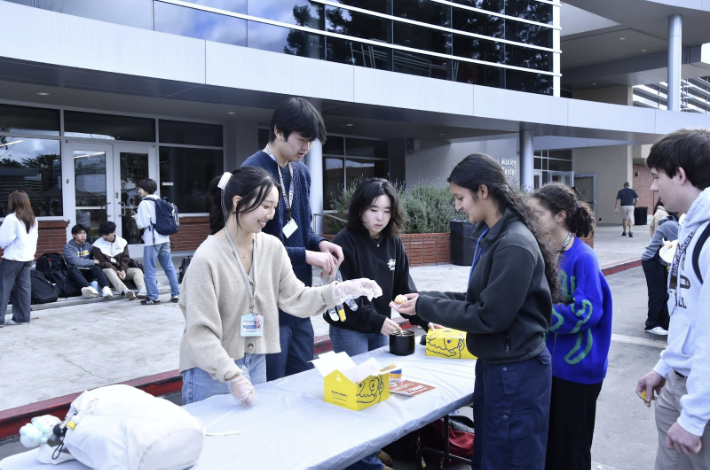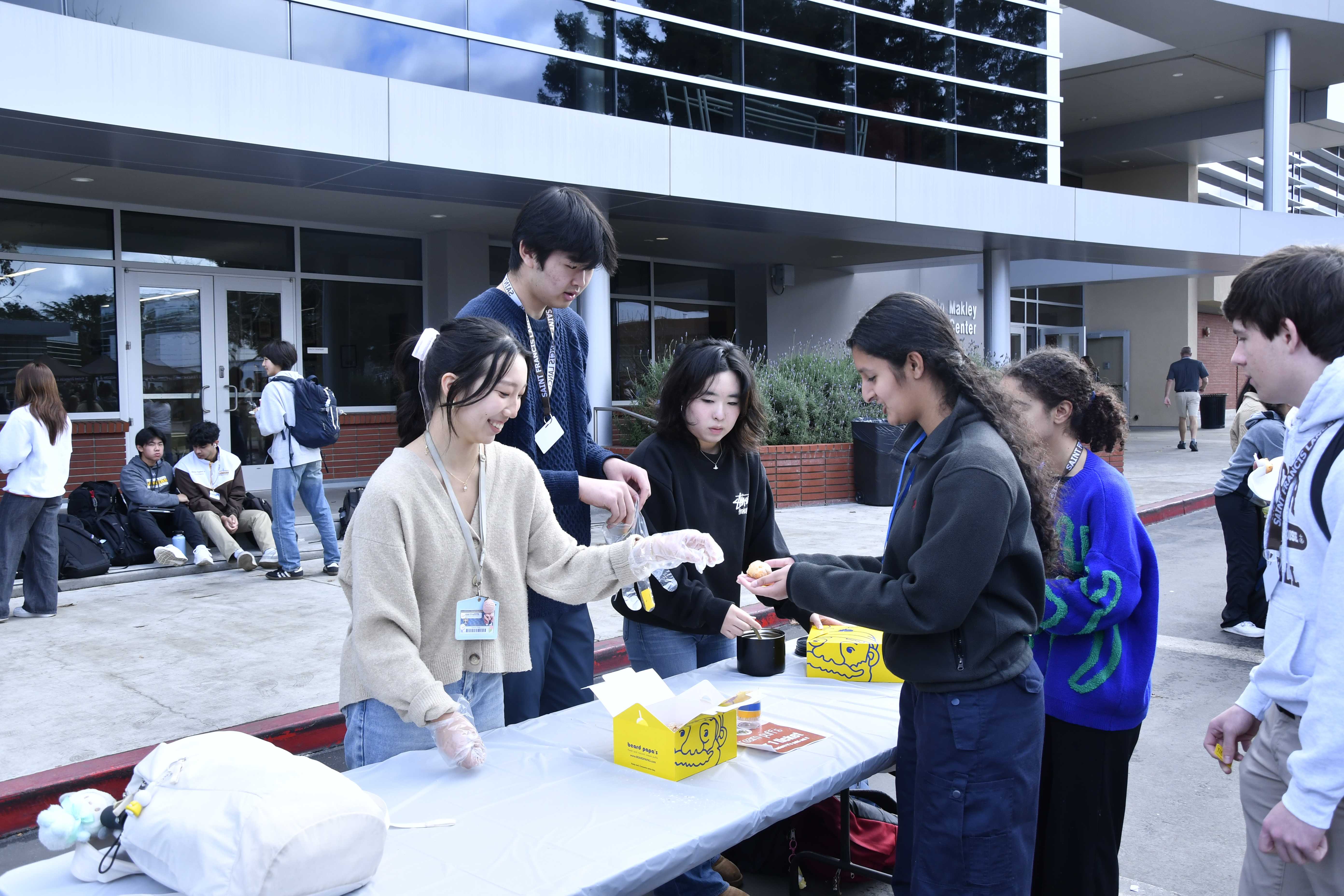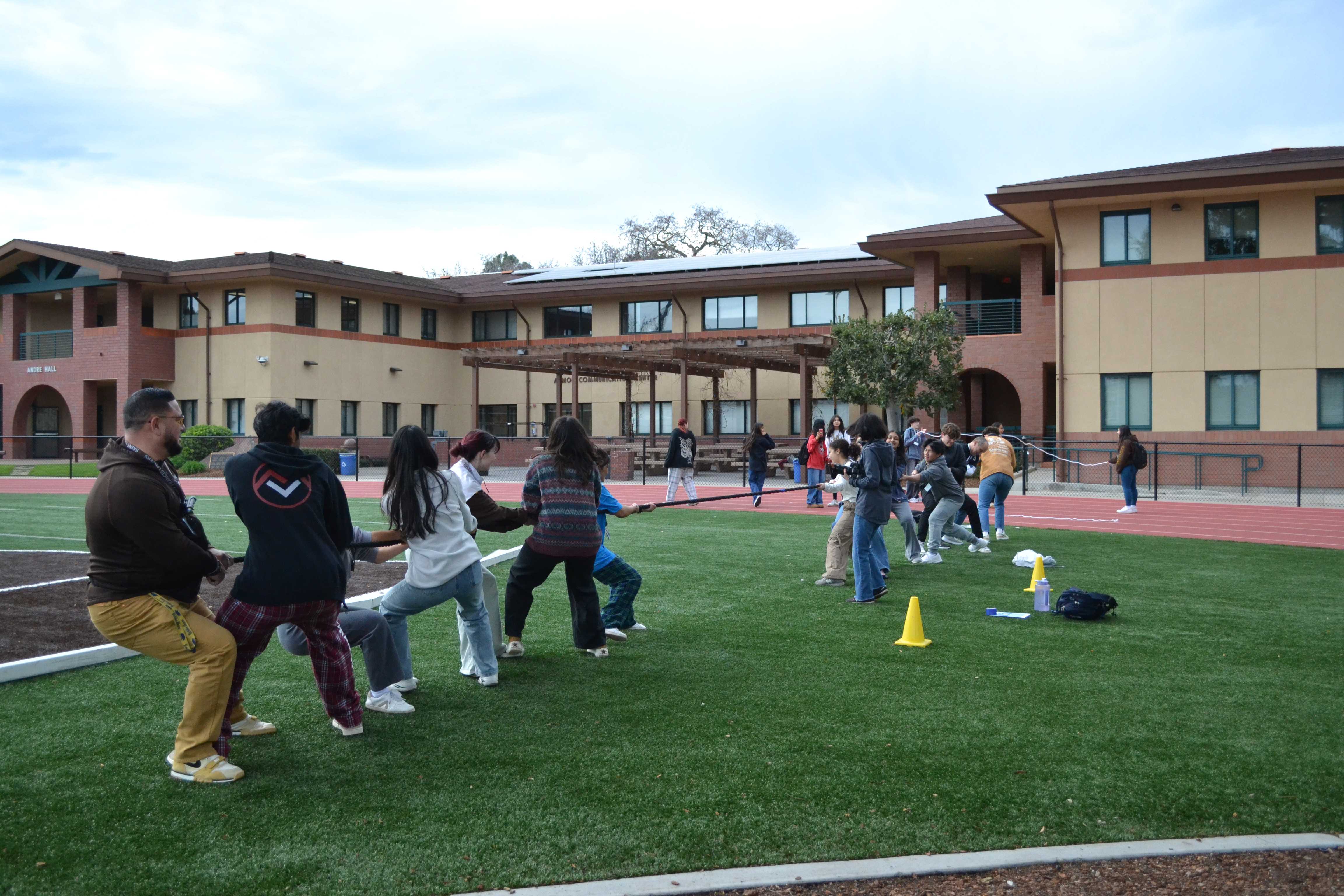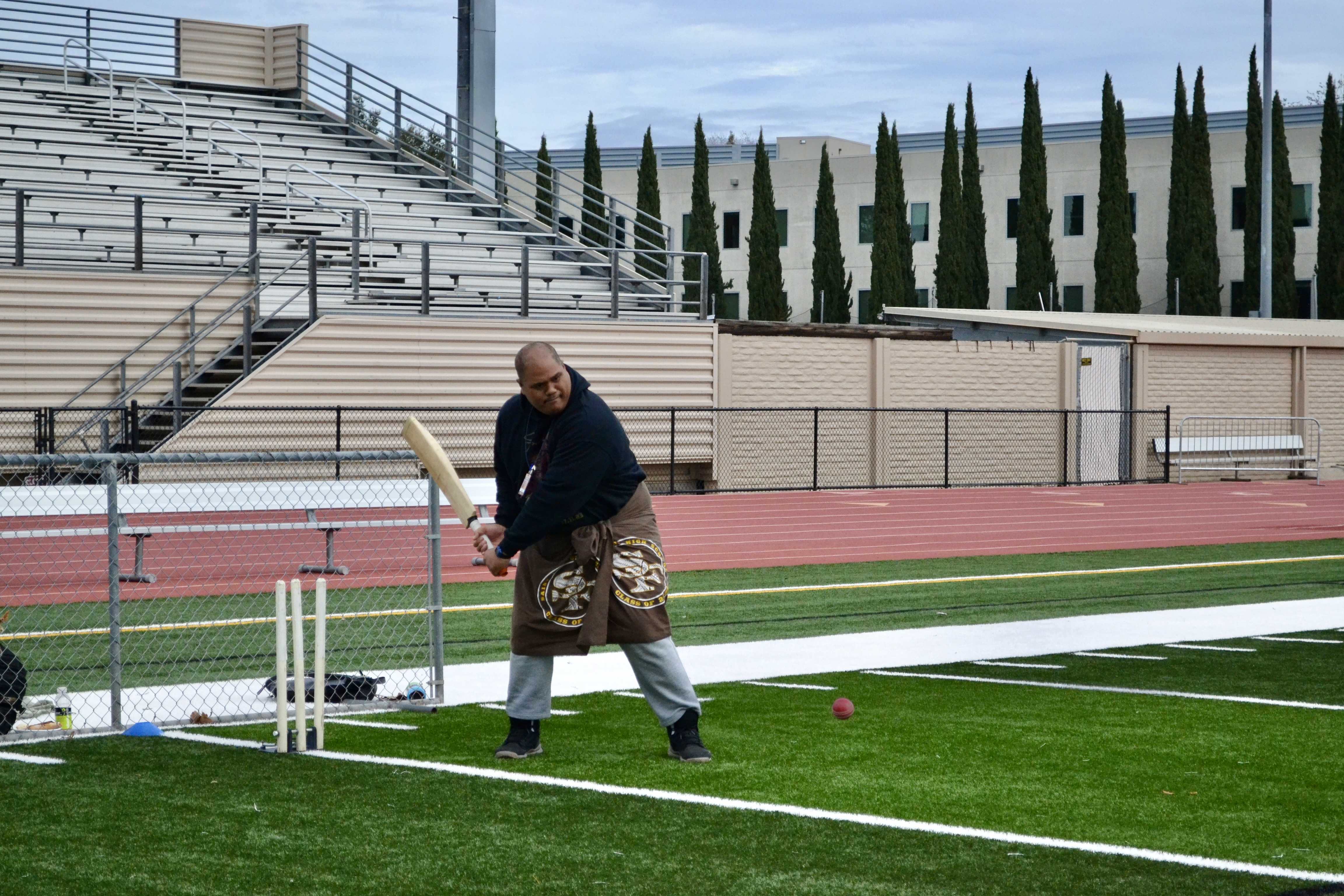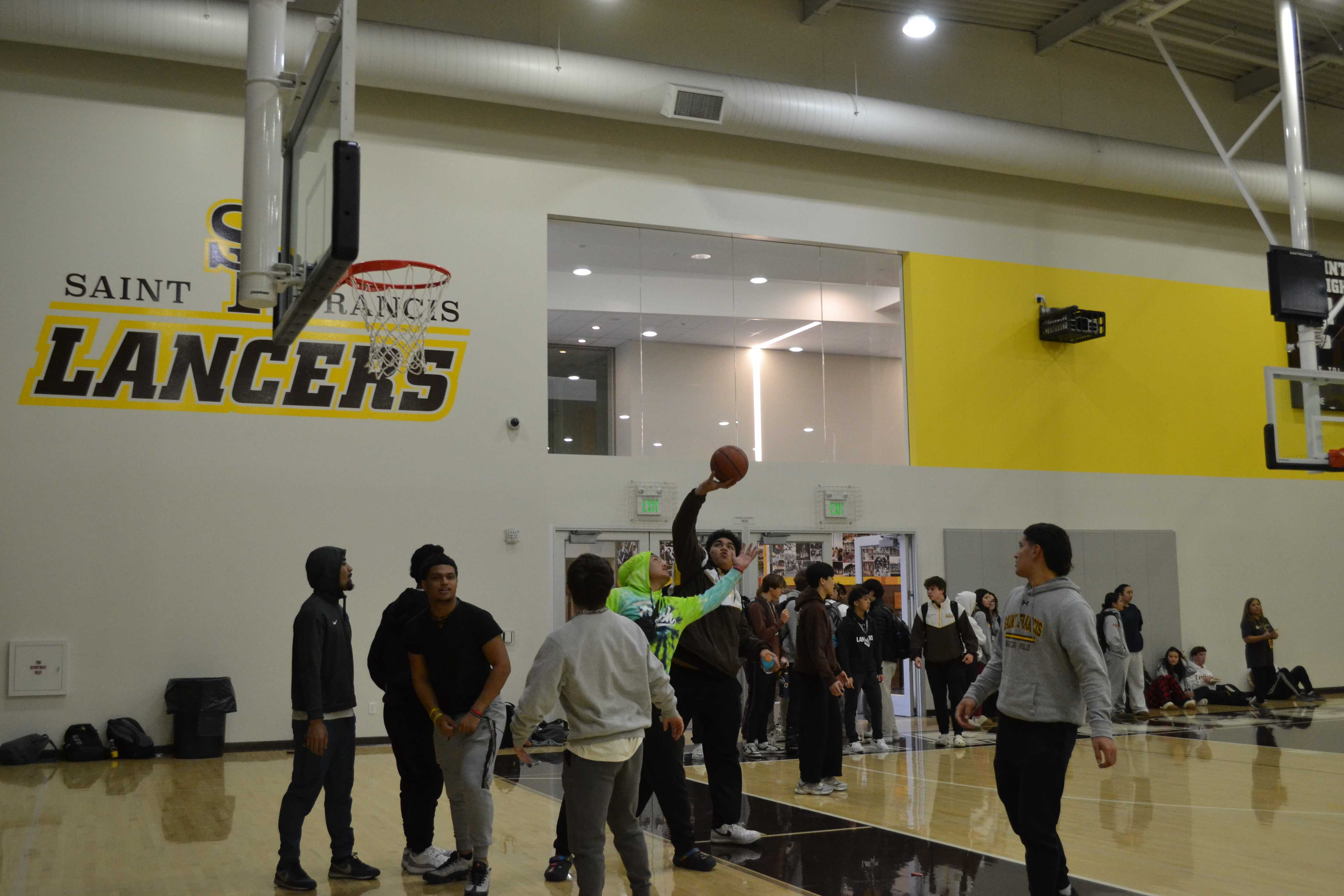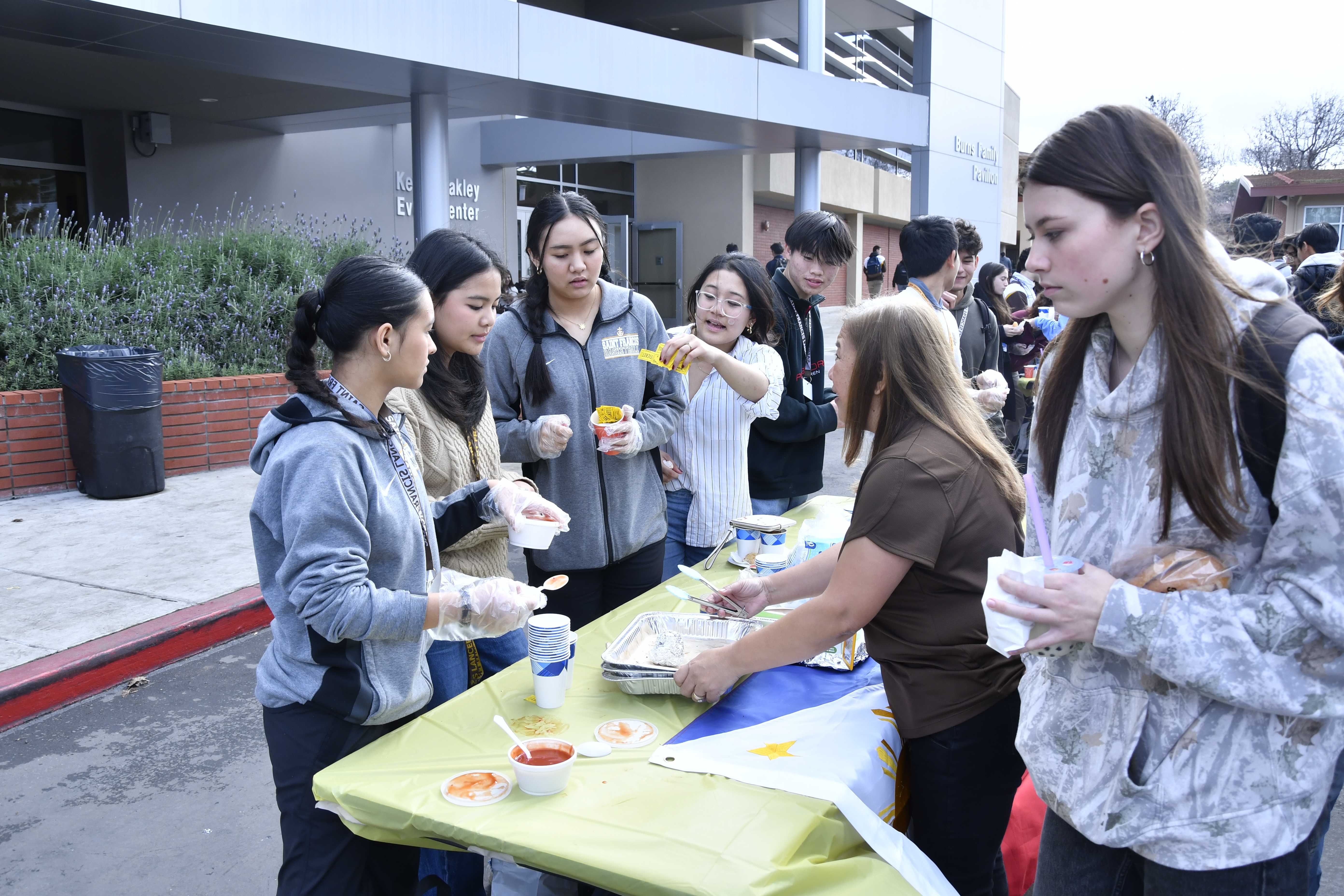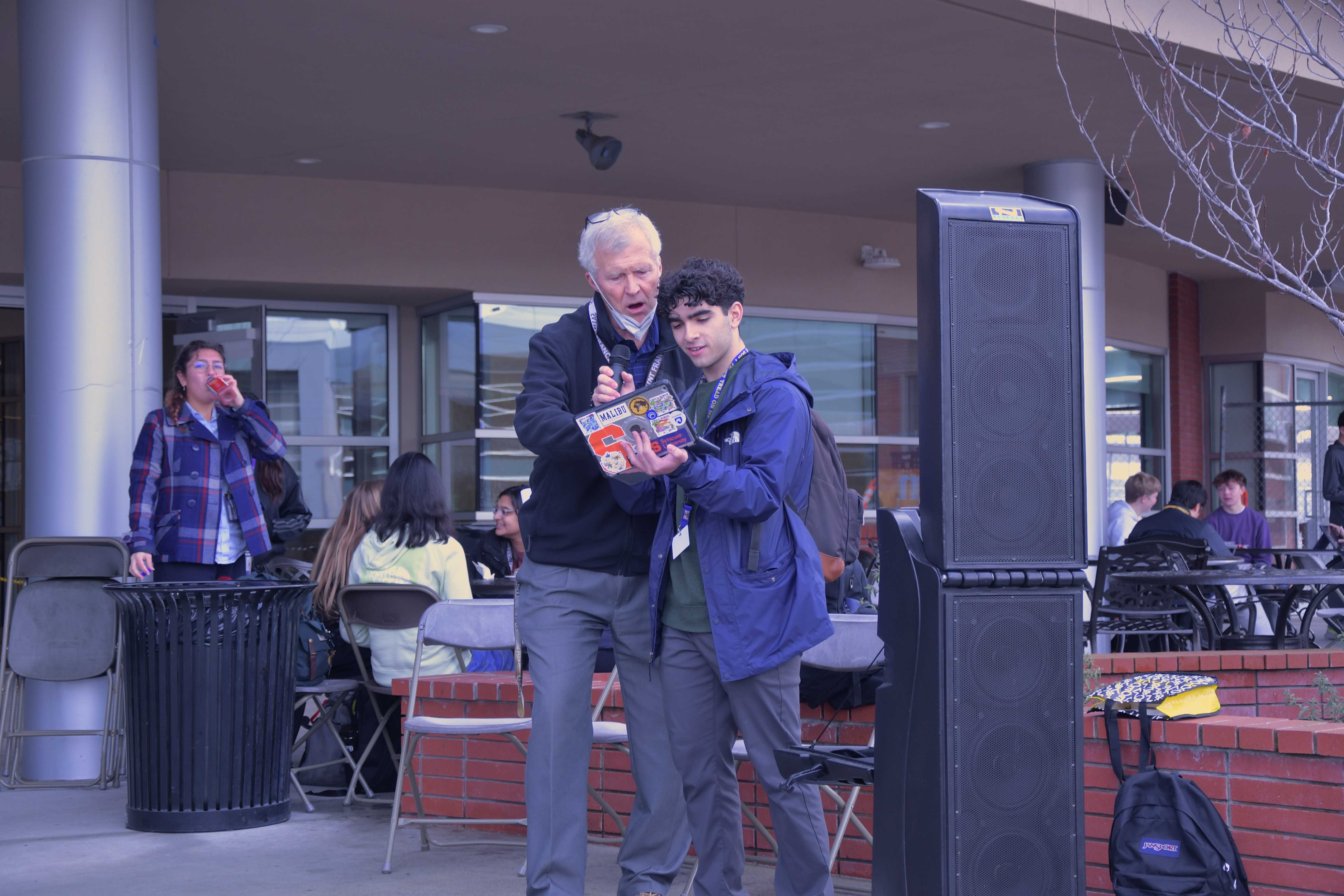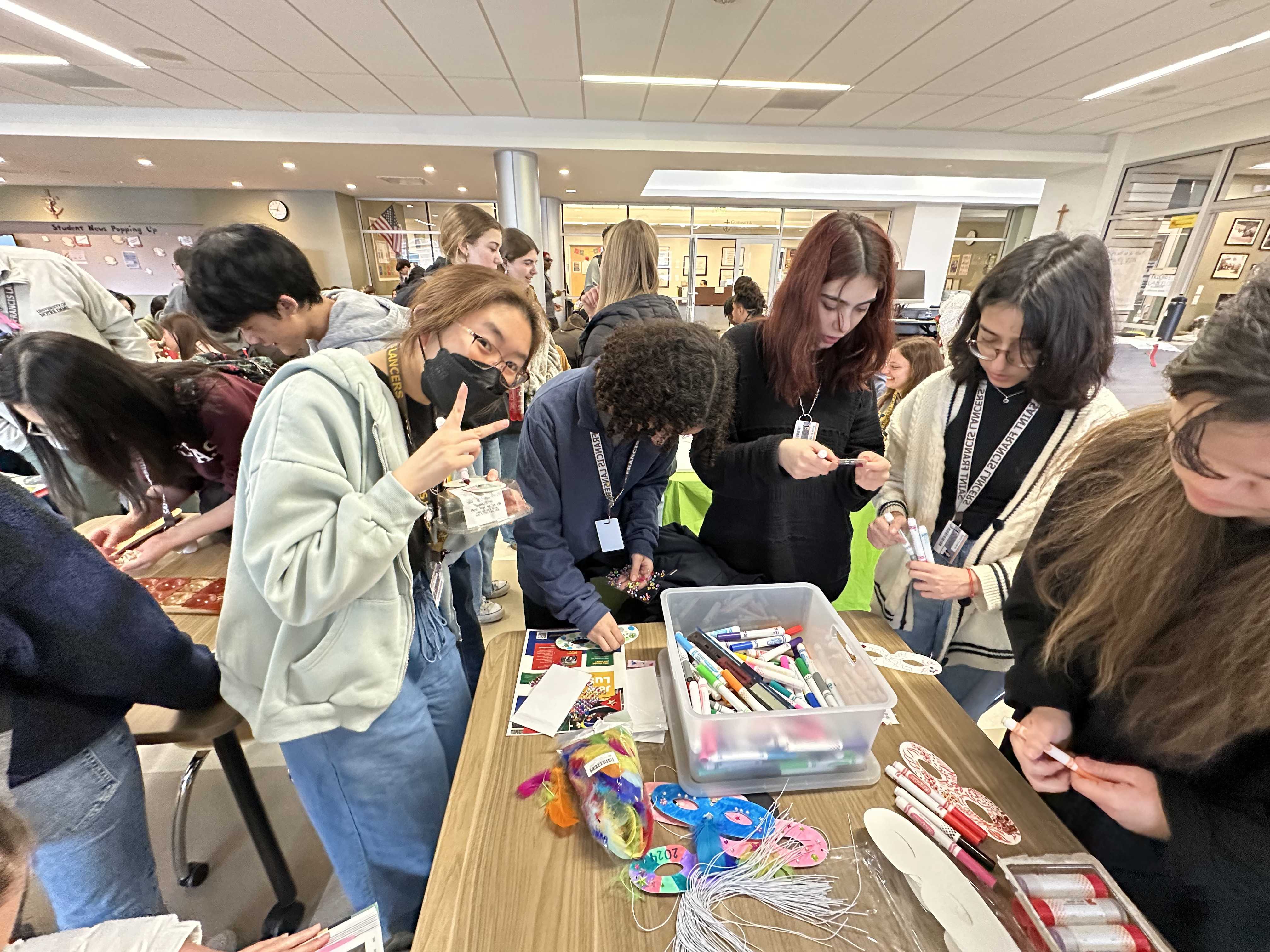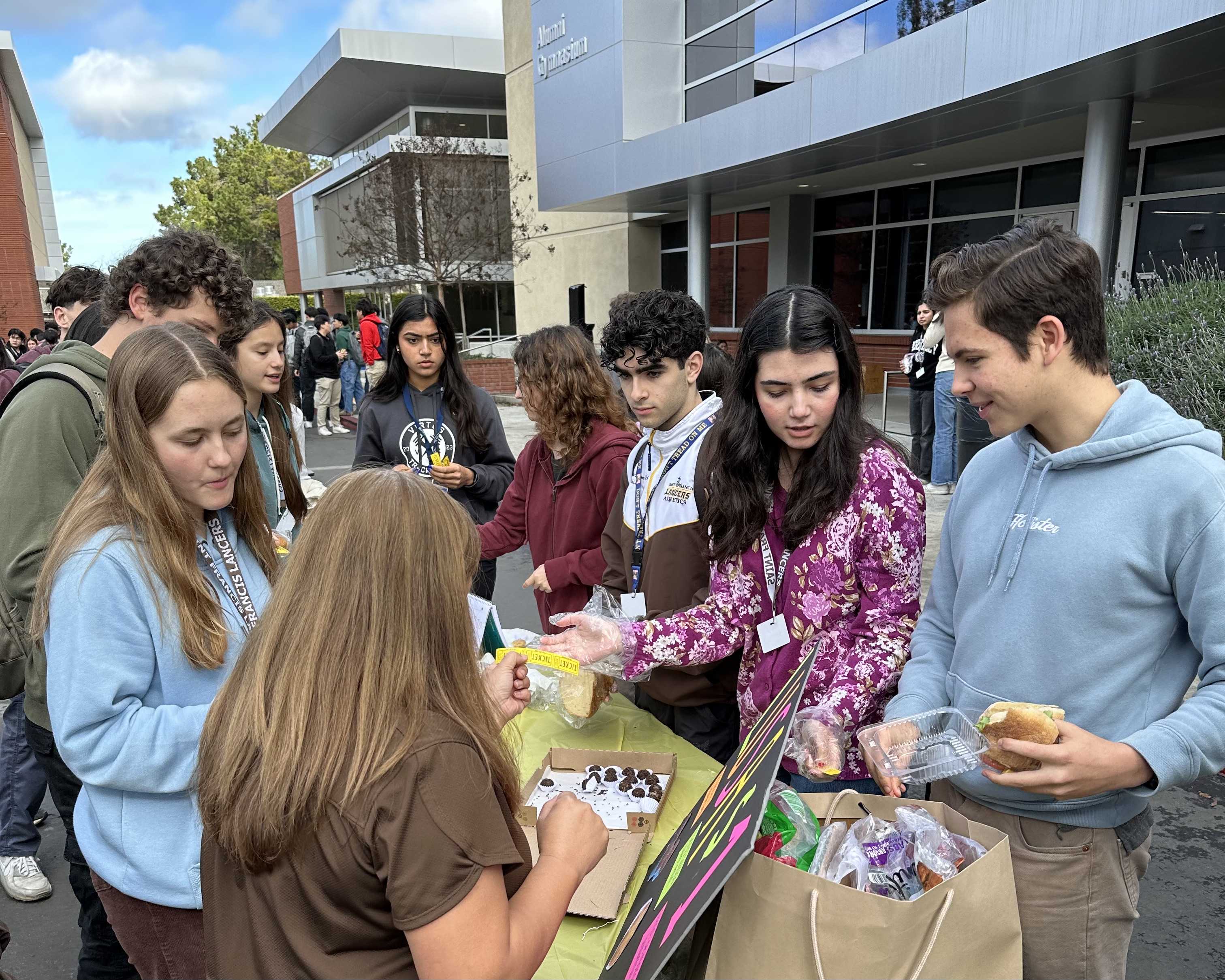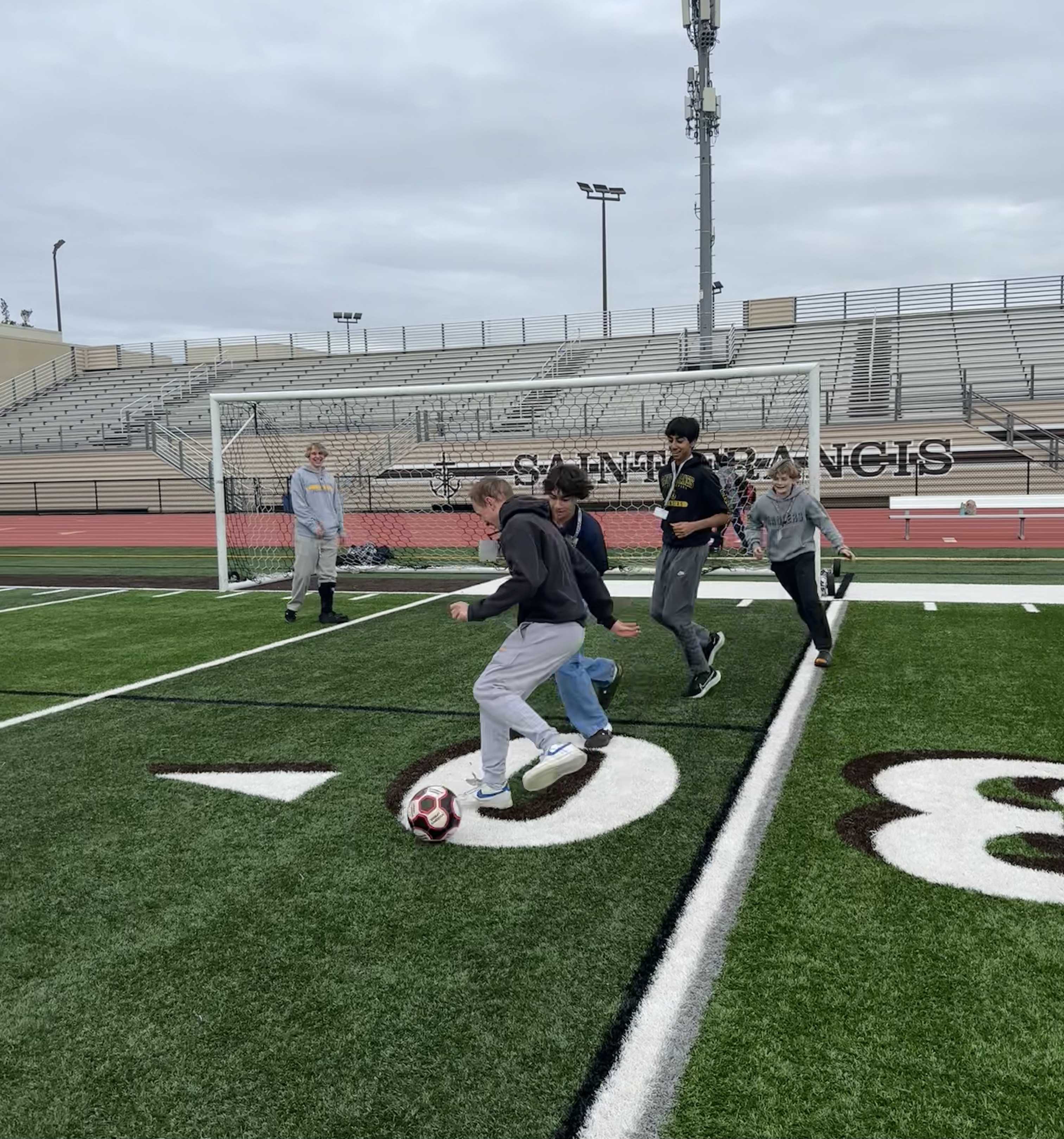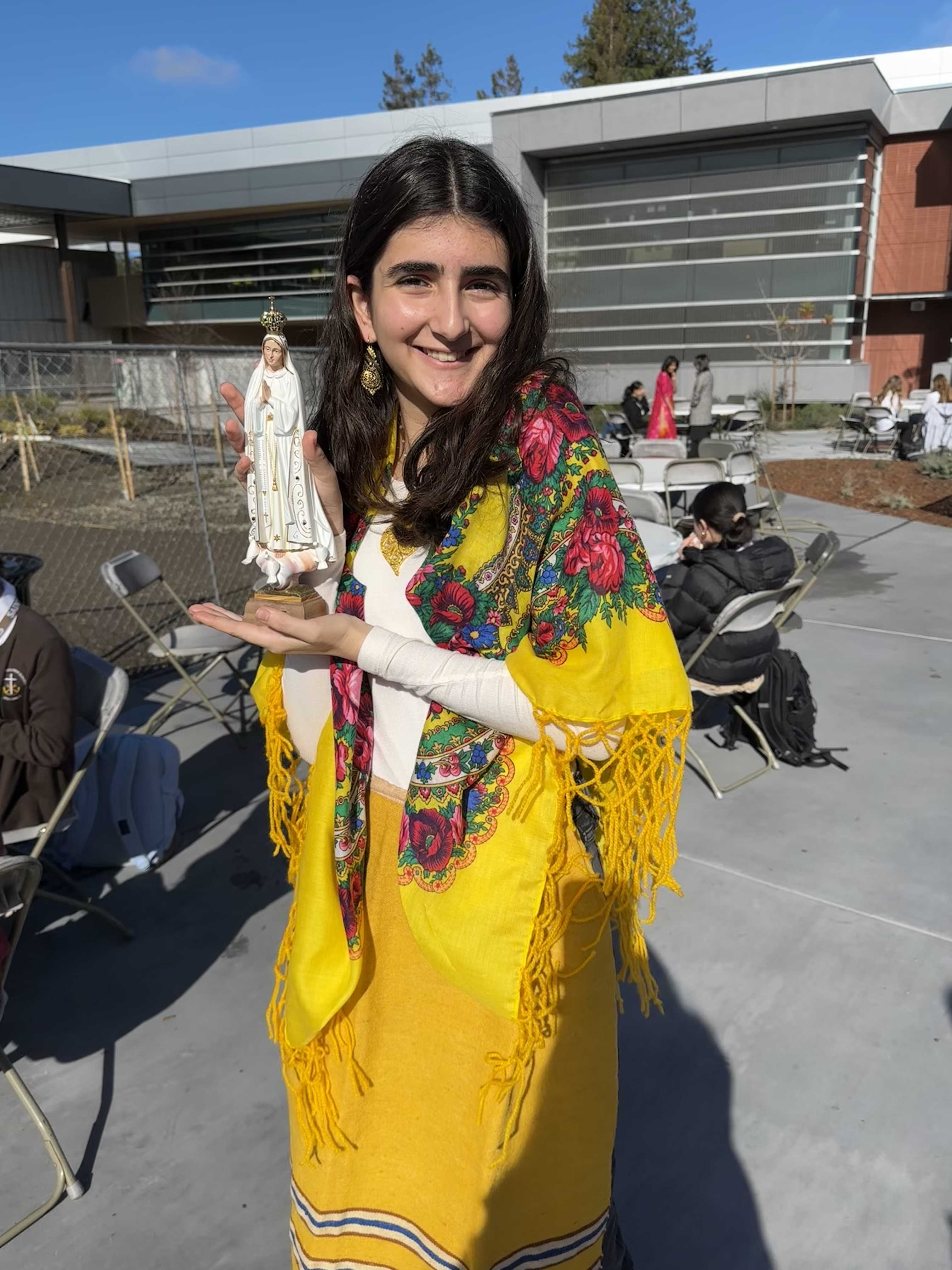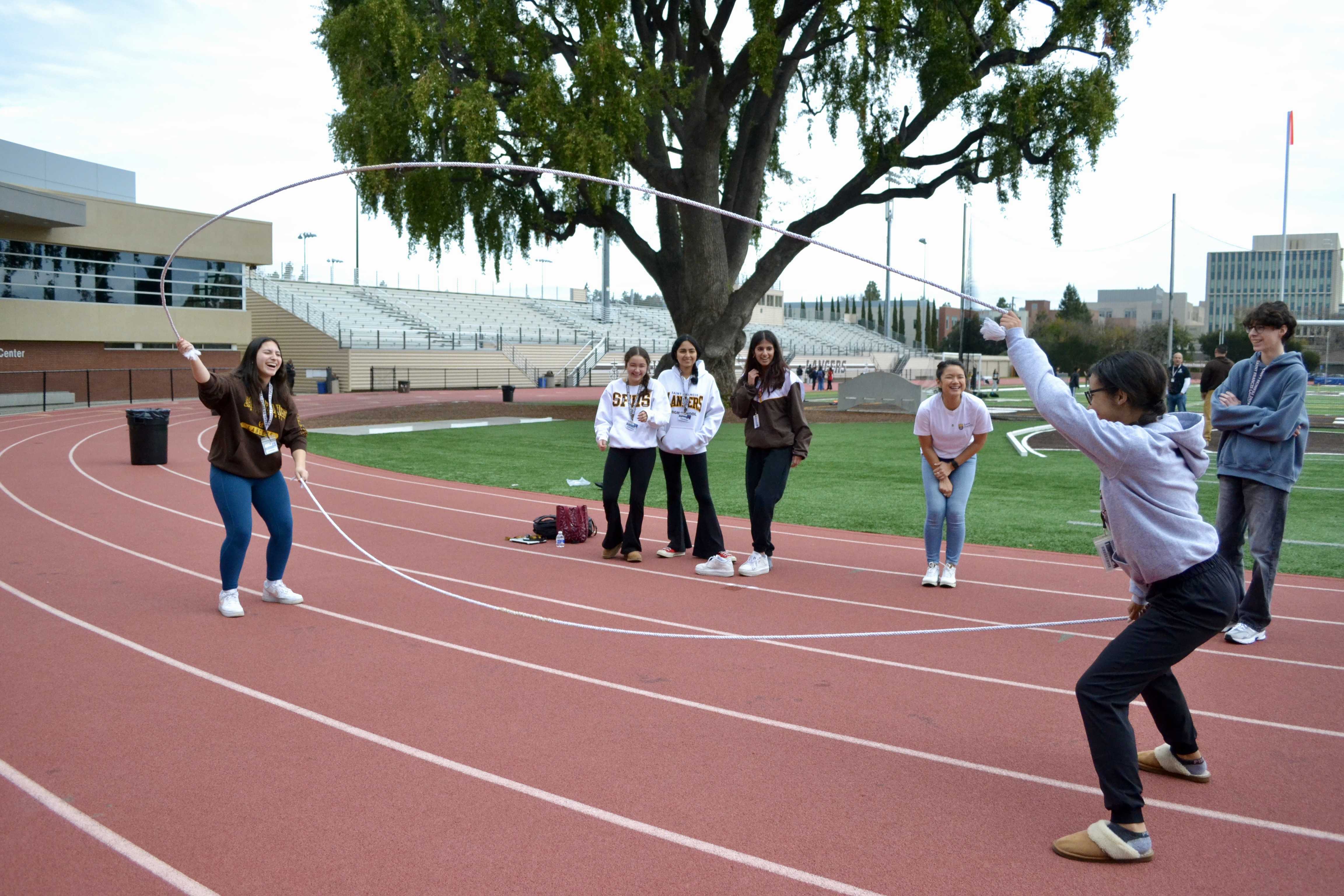by Arsenii Tarasenko (’25) | February 2, 2024
With the resounding success of last year’s first-ever Multicultural Week, it was natural to keep it going. Although many events like the food fair, dance workshops, and the Interfaith Prayer Service continued, a few changes were made this year.
On Monday, students visited the Sobrato Commons to participate in several games and arts and crafts activities scattered throughout tables. The Hindu Student Association offered mehendi, commonly known as henna tattoos, while the Filipino American Student Association brought out mancala. The Multi-Heritage Student Union (MSU) and Middle Eastern Student Union (MESU) brought a large canvas with a traditional Middle Eastern pattern and provided paints for people to fill it in. Additionally, the Asian Student Association (ASA) offered a step-by-step guide on how to make jí xiáng jié, or a good luck knot.
Tuesday’s event was a reworked food fair, with affinity groups offering mouthwatering culinary delights. The colorful signs and boxes of food drew large crowds, and a line formed from the gym’s entrance all the way to the Innovation Center. The Vietnamese Student Association (VSA) brought back a fan-favorite with báhn mì from Duc Huong Sandwiches as well as a new treat: báhn cam, fried sesame-coated buns filled with a delicious, green mung bean paste. Further down, ASA served cream puffs in bright yellow boxes from Beard Papa’s, a popular Japanese cream puff bakery. FASU had a particularly enticing—bargain where two tickets got you three lumpia. Like many other stalls’ snacks, the snacks were sold out within a few minutes of the start of lunch as students raced to collect their favorite dishes. Lusófono Student Association (LuSA) offered the largest selection, selling refreshing, bright colored cans of Sumol Passion Fruit Soda, decadent Brazilian chocolate brigadeiros and massa sovada (an Azorean sweet bread similar to Portugal’s Pão Doce). Last, but certainly not least, the MSU sold chilled Taiwanese boba tea.
On Wednesday, people sang their favorite cultural karaoke songs on the Sobrato Porch and the affinity groups taught people their cultural dances. FASU showed students interested how to jump and dance alongside the rhythmic beating of bamboo poles. This dance, called Tinikling, mimics the graceful dancing of the tikling, a species of birds native to the Philippines. In the gym, LuSA taught the Brazilian samba and dança de pandeiro, a traditional tambourine dance and K-pop Dance Crew board members Vanessa Ko (’24) and Sam Yang (’24) taught the choreography to “Any Song” by ZICO.
Thursday morning started with the calming bang of a giant gong, which marked the start of the Interfaith Service. Black Student Union invited a gospel singer from Berkeley to perform the opening and closing songs. Throughout the ceremony, representatives of Japanese, Korean, Chinese and Vietnamese heritage chanted prayers in their respective languages. Afterwards, members representing various faiths walked one-at-a-time in a procession, presenting symbols to the audience. Other highlights included Tagata Pasifika’s rendition of the Tongan hymn, “Eiki Ko E” and a performance of “Ave Maria” with vocals by Bella Sandoval (’26) accompanied by the Latinx Hispanic Student Union. After the liturgy ended, students crowded into fourteen rows of bleachers to take photos in their beautiful cultural attire.
On Friday, students flocked to the gym and the football field to learn various games and sports. FASU held a streetball game while LHSU played futsal in the Burns gym. Outside, ASA hosted tug of war, a game played during an annual sports day in Japan called undokai. On the football field, LuSA led a game of soccer, while MSU and BSU teamed up for a session of double dutch jump rope. Cricket Club showed students how to play the popular sport to cap off an exciting week of understanding and appreciating the various cultures on campus.




































































